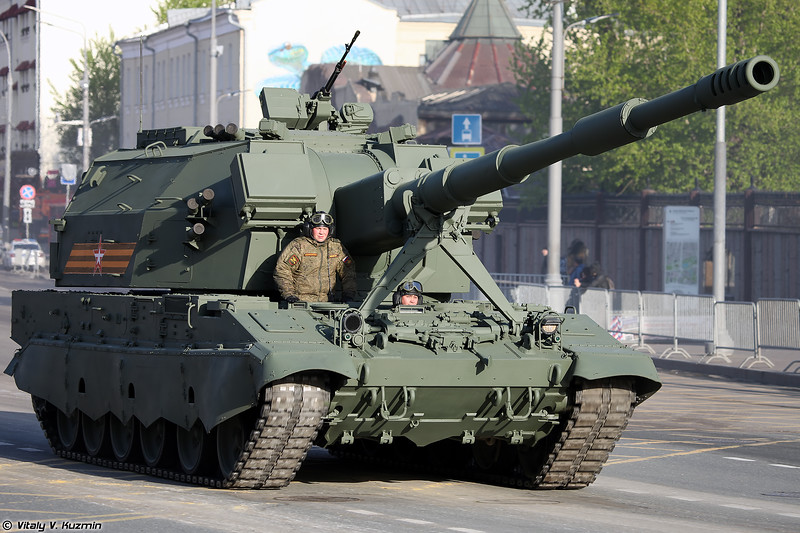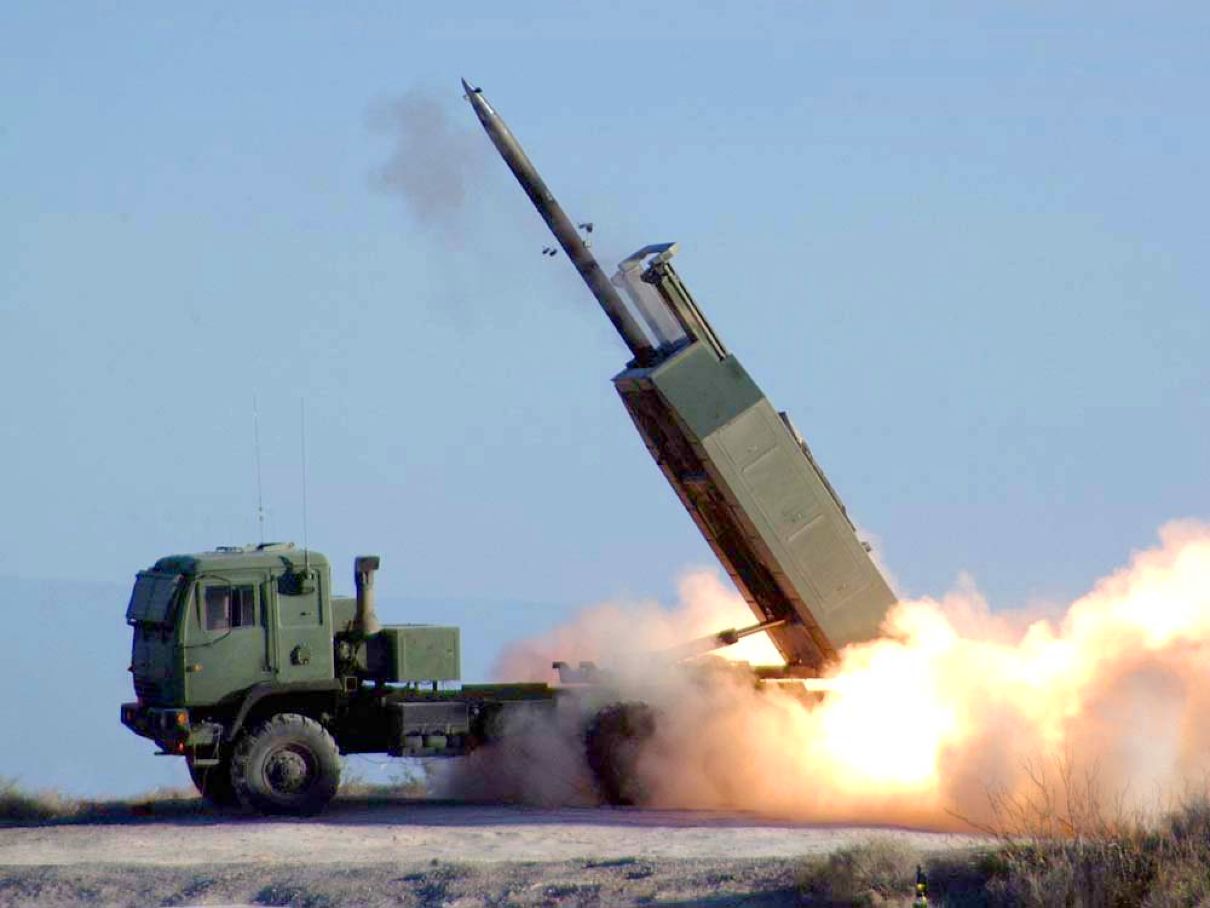As ground combat in Ukraine grinds on underscoring the need for artillery warfare, the Russian Ministry of Defense (RuMoD) announced on January 30 that the first batch of the newest self-propelled artillery complex 2S35 “Coalition-SV” or “Koalitsiya-SV” is at the final stage of production.
The state defense order for the production of new self-propelled artillery units in Yekaterinburg was overseen by Russian Defense Minister Sergei Shoigu, Russian News Agency RIA Novosti reported. Moreover, he noted that the volume of production of self-propelled artillery units has increased six times compared to 2022.
On his visit to the Ural Plant of Transport Engineering, Sergei Shoigu inspected the implementation of the state defense order for the production and repair of self-propelled artillery systems 2S19 “Msta-S,” 2S3 “Acacia,” 2S4 “Tulip,” 2C5 “Hyacinth,” as well as 2C35 “Coalition SV.”
Furthermore, the Minister chastised the company’s main designer for postponing the manufacture of a highly promising artillery complex without referring to any particular system.
“We took this up tightly in 2022. We should have these machines already working in full in 2023, and you are so calm, so to speak, good,” said Shoigu.
Projected as the most lethal artillery system developed by Russia, the Coalition SV self-propelled artillery complex reportedly entered serial production in December last year. It has been widely reported that this weapon system has novel capabilities that can drastically change the battlefield scenario. However, whether the system was tested in Russia’s so-called ‘special military operation’ zone is not confirmed.
A vehicle with a range of 70–80 kilometers, the Coalition-SV is anticipated to be fielded on the frontline this year. Military analysts have noted that the artillery complex establishes a new standard for self-propelled howitzers with its remarkable firing rate of more than ten rounds per minute or possibly even 16 rounds per minute.
Bekhan Ozdoev, industrial director of Rostec’s Armaments, Ammunition, and Special Chemicals Cluster, previously pointed out that the system is highly automated and is frequently referred to as a “combat robot” owing to capabilities like an automated system that handles target selection, gun aiming, and navigation.

Coalition-SV guns are mounted on a T-90 chassis even though the hull of the vehicle and its crew have more resemblance with a T-14 Armata tank. The self-propelled system is outfitted with a modern 2A88 cannon which fires 152mm artillery shells.
The complex has been designed to destroy command posts, communication centers, artillery and mortar batteries, armored vehicles, air defense, and missile defense systems by firing guided artillery shells. Drones offer laser identification for guided shells.
The Coalition-SV is reportedly set to replace the 2S19 Msta-S. Despite being a promising state-of-the-art war machine, the development of the single-barrel system has been marred with delays. For instance, the self-propelled cannon was still undergoing state trials as of April 2023, but these were finished in October, opening the door for mass manufacturing.

Besides this, a wheeled version of the vehicle with an 8×8 wheel formula is being tested on a KAMAZ truck chassis to cater to the demands of urban warfare and modern combat, as seen in Ukraine.
On regular highways, it will be able to travel great distances without damaging the pavement, whereas in a well-developed road network, the mobility of wheeled self-propelled guns is greater than that of conventional tracked ones.
Sergei Chemezov, the head of the Rostec state defense conglomerate, said late last year, “I think they will appear there [on the battlefield in Ukraine] soon since howitzers of this class are needed to provide an advantage over Western artillery models in terms of firing range.” However, no verified reports are confirming the use of the complex in Ukraine, despite previous Russian media reports that noted that at least one of these was deployed in Ukraine for state trials.
Russia Is Pacing Ahead In The Artillery Race
The latest news about the Coalition-SV comes at a time when combat between the two sides is intensifying once again. The state push for the production and fielding of this weapon system also indicates that Russia is still heavily relying on artillery support against Ukraine.
On its part, Kyiv’s forces have also been relentlessly using their Western-supplied Howitzers and HIMARS to pound Russian positions. The HIMARS has been tactfully used to blunt Russia’s artillery warfare edge by obliterating its forward-deployed howitzers, including the 2S19 Msta-S. However, the Russians have seemingly adjusted to it.

Russia has struggled in other areas of the conflict, but its ability to repel Ukrainian forces has largely depended on its artillery. When fighting in close quarters, Russia’s main weapon of choice is artillery. The task assigned to its combined weapons parts is to arrange themselves in a way that allows the artillery to inflict devastating damage on their opponents, as previously noted by the think tank RUSI in an extensive report.
Against this background, military analysts have observed that if Ukrainian troops wish to attempt to soften the enemy’s edge in firing, they will require other armament because they can’t keep up with Russia’s present pace of artillery fire. This suggestion comes amid an increasingly bleak prognosis for Kyiv on the battlefield.
In a recent analysis by Rob Lee of the Foreign Policy Research Institute, Michael Kofman and Dara Massicot of the Carnegie Endowment for International Peace, and others stated that “Western-provided artillery ammunition in the future is unlikely to support a fire rate that exceeds Russia’s.”
The Russian military is outmatching Ukrainian soldiers, and there is a critical scarcity of ammunition in Kyiv. On top of that, Russia’s alleged acquisition of North Korean weapons and expanded production of its shells and newer systems does not augur well for Ukraine.
According to some estimations, Russia is getting close to daily totals of about 10,000 shells, while the Ukrainians are currently only firing 2,000 artillery rounds each day. The experts predicted that next year, Moscow’s fire rate will be “more than that number.”

In their article, Kofman, Massicot, and Lee wrote that “since Ukraine was unable to overcome Russia’s defenses last summer with a quantitative advantage with artillery ammunition, the prospects for future offensives will be worse unless Ukraine and its supporters can compensate by developing other advantages.
The experts further noted that “this means that the volume of artillery fire will have to be supplemented with drones and other precision strike capabilities in the future.”
Having said that, NATO inked a $1.2-billion deal last week to produce tens of thousands of artillery rounds to restock member nations’ depleting ammunition stores as they arm Ukraine to stave off Russia’s incursion.
According to NATO’s support and procurement office, the contract would enable the acquisition of 220,000 rounds of 155-millimeter ammunition, the most sought-after artillery shell.
It will enable allies to bolster their stockpiles and supply Ukraine with additional weaponry, including more precision-guided munition, longer-range missiles, and other novel and expanded military support to blunt the edge enjoyed by the Russian military.
- Contact the author at sakshi.tiwari9555 (at) gmail.com
- Follow EurAsian Times on Google News




